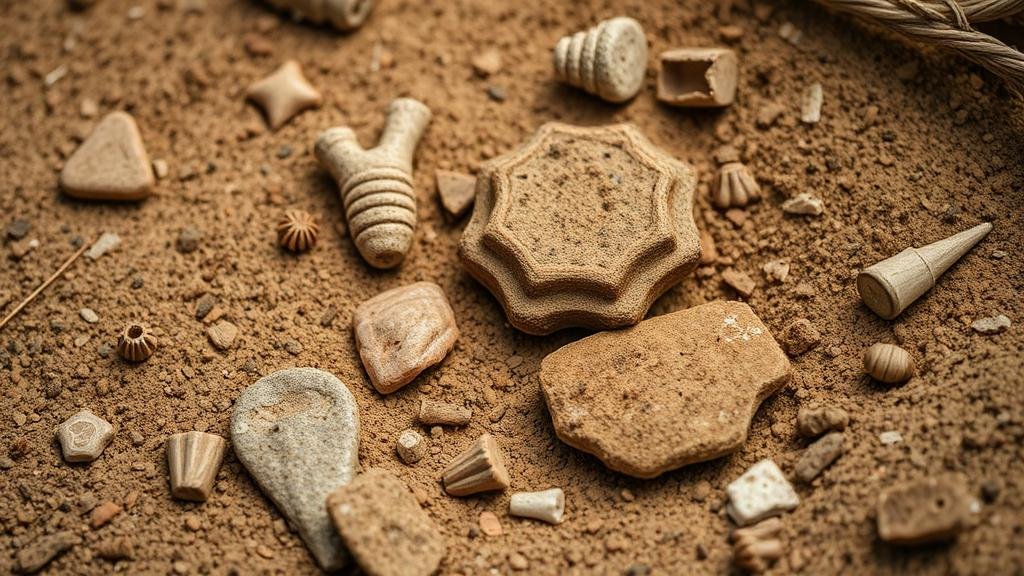Unearthing Tribal Relics in Areas Near Salt Licks and Game Trails
Unearthing Tribal Relics in Areas Near Salt Licks and Game Trails
The discovery of tribal relics near salt licks and game trails has significant implications for our understanding of prehistoric societies. These areas were not just vital resources for ancient peoples; they were also cultural crossroads that provided insights into the lifestyle, social structures, and interactions of various tribes. This article delves into the rationale behind examining these landscapes, the methodologies employed in archaeological studies, and the notable findings linked to such sites.
The Importance of Salt Licks and Game Trails
Salt licks, natural deposits of mineral salt found in various ecosystems, have historically attracted both wildlife and human populations. Game trails–routes used by animals as part of their natural migration–often intersect these licks, creating prime hunting grounds for ancient tribes. As a result, these areas serve as rich archaeological sites where the archaeological record is more likely to be preserved due to the aggregated activities over time.
Archaeologists recognize several key reasons for investigating these locations:
- Resource Availability: Salt was a crucial nutrient for early humans and animals alike. Its presence would draw large herds, making these areas advantageous for hunting.
- Cultural Significance: These sites often held ceremonial importance for different tribes, symbolizing life, health, and sustenance.
- Trade Routes: The convergence of game trails likely facilitated trade between tribes, thus enriching their cultural and social practices.
The unearthing of tribal relics demands rigorous archaeological methodologies. Researchers employ a multi-faceted approach that includes the following techniques:
- Surveying: Prior to excavation, archaeologists conduct extensive surveys of the terrain using GPS mapping and aerial photography. These techniques can identify patterns indicative of human activity.
- Excavation: Systematic excavation involves careful stratigraphic digging to ensure that artifacts are recovered in the context of their deposits. Tools such as trowels, shovels, and brushes are utilized for precise digging.
- Radiocarbon Dating: Once artifacts are unearthed, scientists employ radiocarbon dating to determine their age. This technique is pivotal in establishing chronological timelines for human habitation.
- Ethnobotanical Analysis: By examining plant remains, researchers can discern what types of flora were utilized by the tribes, offering insights into their diet and environment.
Case Studies and Notable Discoveries
Several case studies exemplify the rich tapestry of information that salt lick and game trail excavations can reveal. One notable example is the excavation site at the Bluefish Caves in the Yukon, Canada. Here, fossilized remains of mammoth, bison, and other megafauna were found alongside human artifacts, suggesting that early inhabitants strategically utilized these areas for hunting large game.
In the Southeastern United States, investigations at a salt lick in the Appalachian region uncovered pottery shards and stone tools dating as far back as 3000 BCE. e findings highlight the long-term occupation and cultural continuity in these areas. Also, the diverse range of artifacts indicates that multiple tribes interacted with each other, showcasing a rich tapestry of trade and cultural diffusion.
The Impacts of Modern Development
Modern development poses significant threats to these archaeological sites, often leading to irreversible loss of cultural heritage. As urbanization expands, land-use changes and construction activities frequently disturb prehistoric locations. As a result, archaeological salvage operations are becoming increasingly vital to document and preserve these relics before they are lost forever.
For example, construction projects in regions near salt licks in Illinois recently prompted archaeological investigations, leading to the discovery of numerous tools and ceremonial objects from the Mississippian culture. Such initiatives stress the importance of integrating archaeological assessments into development planning to ensure the protection of invaluable historical resources.
Conclusion and Actionable Takeaways
The examination of tribal relics in areas surrounding salt licks and game trails is not merely an academic pursuit; it is a vital endeavor to preserve and understand our shared human heritage. The materials and stories unearthed from these sites provide insights into the lives of our ancestors, their survival strategies, and their cultural practices.
To support archaeological efforts, stakeholders such as local governments, developers, and archaeologists can:
- Advocate for thorough archaeological assessments before any land-use changes.
- Educate communities on the significance of preserving local archaeological heritage.
- Encourage public participation in archaeological initiatives to raise awareness and support.
By prioritizing these actions, we can ensure that the knowledge embedded in our history is not only preserved but also celebrated for generations to come.



